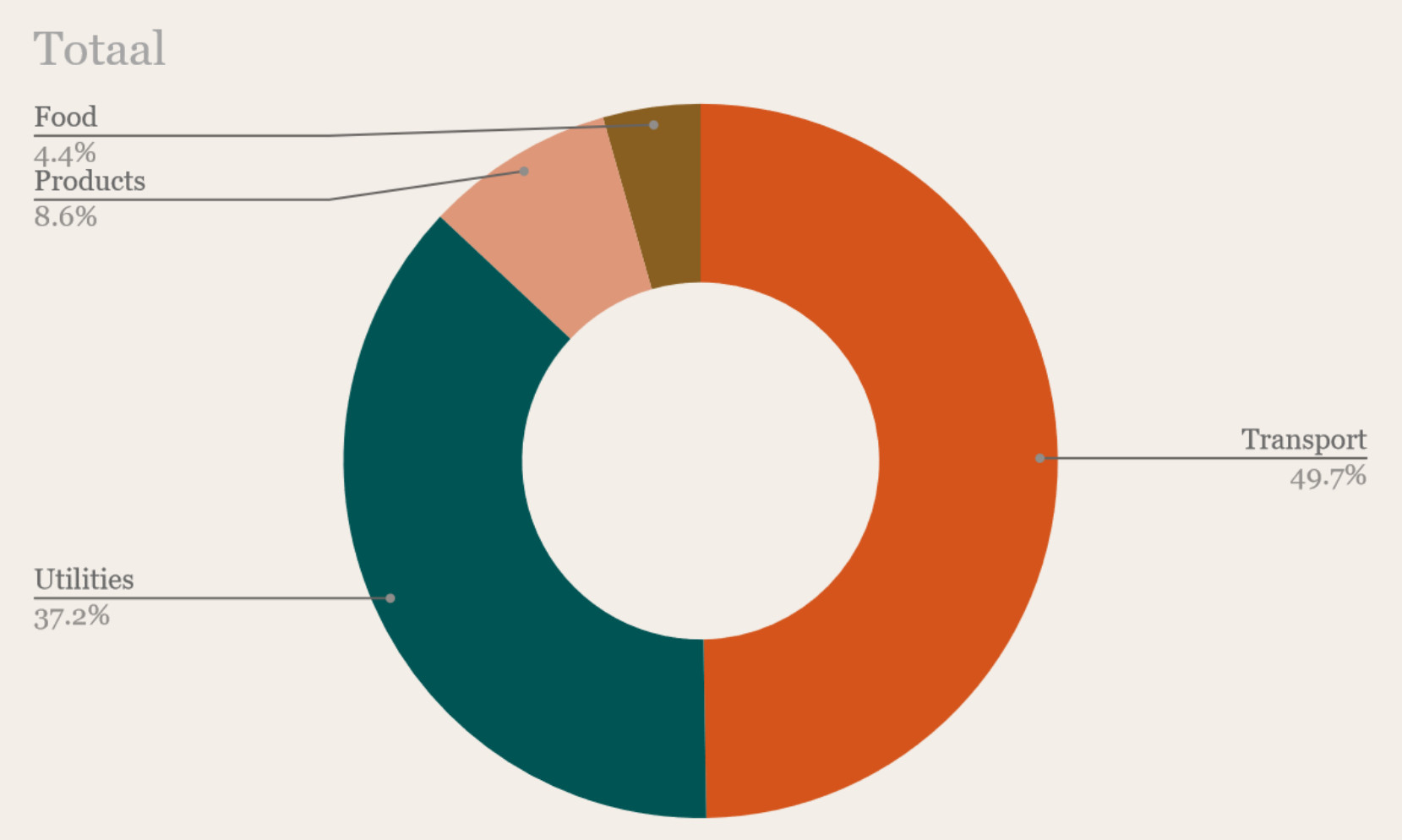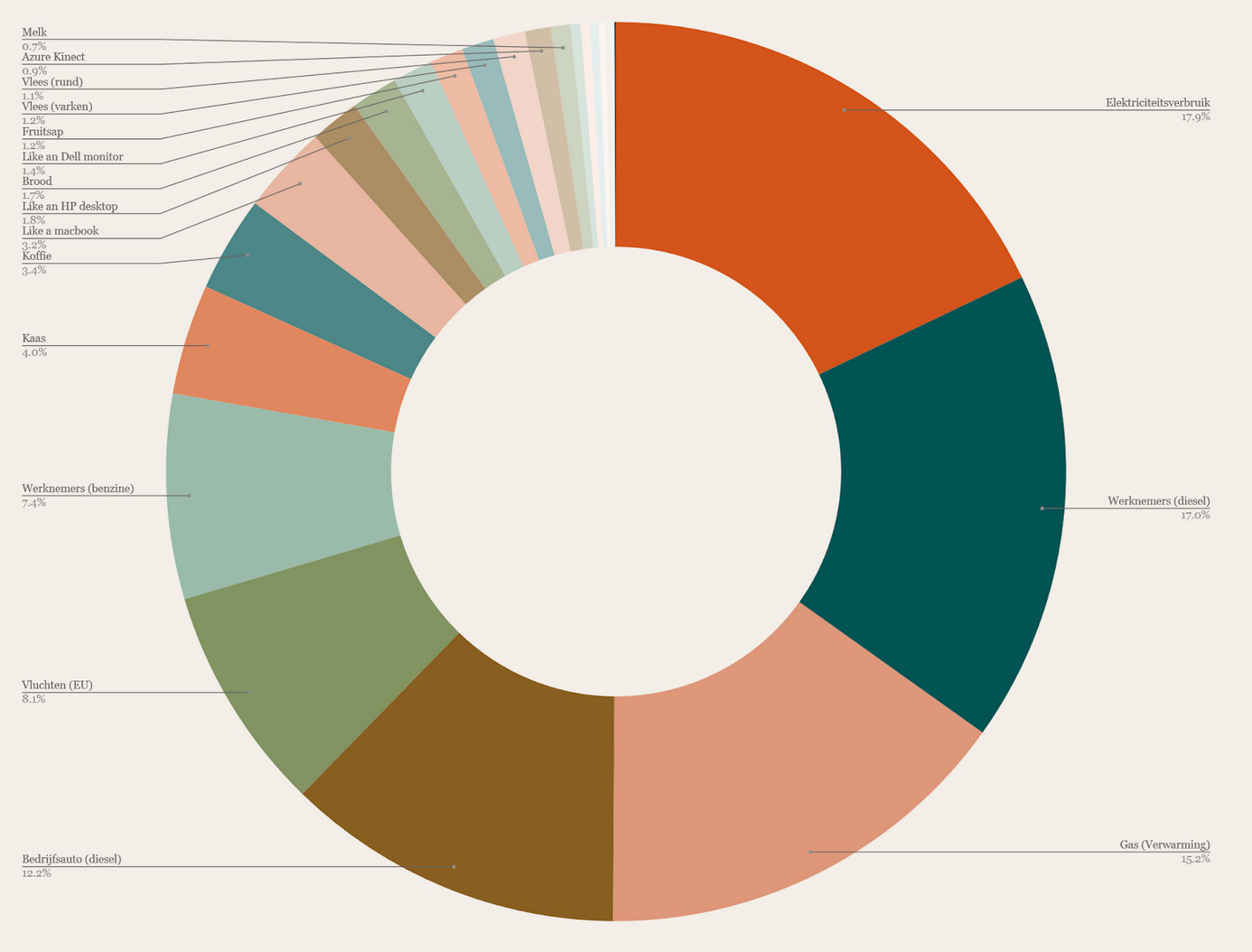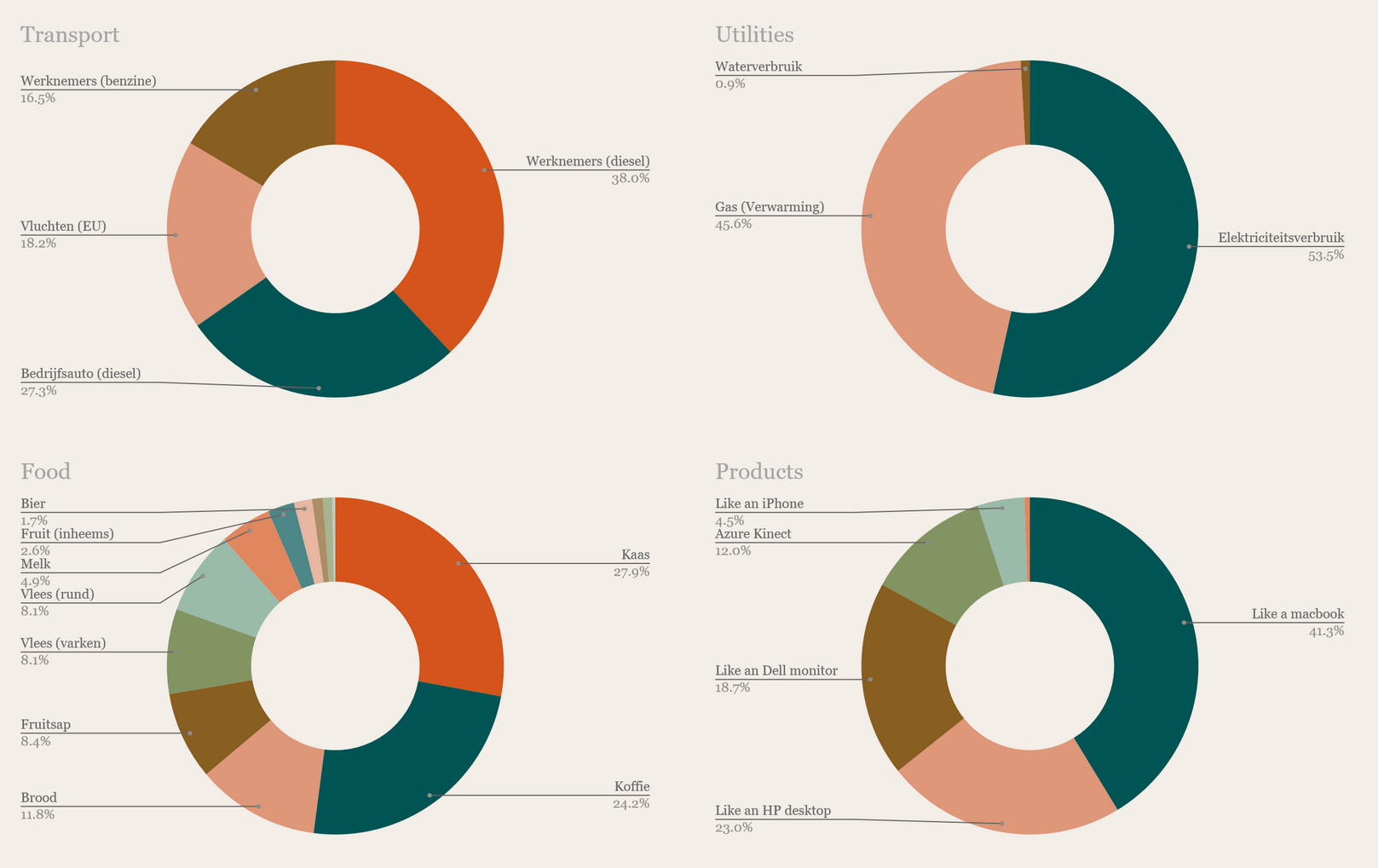Our climate footprint
~ by Thomas Kole
Year over year, global temperatures are rising, bringing with it droughts, storms, changing weather patterns.
Predictions for the end of the decade are not too rose-colored, and most people by now are aware that something has to be done.
The later we act, the more severe our measures will have to be.
Everyone will have to do their part, which lead us to the question: what is our part?
31.2 t CO₂e
That's it. That's the YIPP greenhouse gas footprint of 2019. This number is the sum of 4 categories:
- Transport (commuting, business trips)
- Utilities (heating, water, power)
- Purchases (mostly electronics)
- Lunch
Each category is itself a sum of all sources of emission that we could think of.
When we started the inventory of emissions, we tried to make some guesses. Which of these categories would take the biggest share? Commuting? Or utilities? And would that be 26%, or 75%?
Gathering info
For several days, we gathered information during downtime. Transport was easy - just add up all the km's per car, plane, etc. Lunch was harder - many different ingredients, each with a different impact. Gas and electricity had to be estimated based on bills, and purchases too.
Emissions per Category (open in new tab)
Clearly, transport takes the crown. A whopping ~50% of our emissions are people driving from and to work, and visiting clients. This while a lot of people already take the bike and train. Take a look at how each item scores in each category:
Each item's share of the pie (open in new tab)
These are all the items lined up. The least impactful items (<~5%) don't show up. What surprises you?
Lessons
Just avoid the plane.
Plane emissions take a good 8% of our total pie, even though we made only a handful of trips. In 2018, with the Shenzhen project, a few trips back and forth alone added up to over 40 t CO₂e, bigger than our current total footprint.
Take the train where possible, and accept the longer travel time.
A vegetarian diet reduces emissions, but...
replacing the meat with cheese is no solution. Cheese, per kg, has about as big an impact as most meat. Eating less meat and dairy (and drinking less coffee) is still worth it.
Buy less stuff
stuff, in our case especially electronics, require a lot of energy to produce. Mining of resources, production, assembly and transport all play a role. Ordering online is easy, but beware of the impact.
Promote public transport
The commuting kilometers add up, and cars (when used by just a single person) are just very inefficient. Electric vehicles are no silver bullet either - they break even only if they are charged with emissionless power.
Switch to a green energy provider
We're running a lot of computers, if all that electricity would be green we'd save a great deal.
Banking matters
Most big banks and retirement funds are stuck in investing in fossil fuels and other polluting industries. Switching will reduce an invisible part of the footprint.
2020
We'll be forging plans to reduce our emissions going forward, let's see what the status is at the end of 2020!

